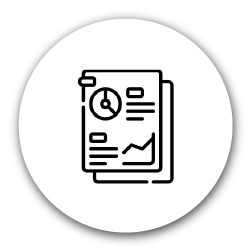Creating and implementing meaningful planograms* can appear to be a simple task. At least, at first. However, as with any successful business venture, there are a few steps to follow. There are also various tips and tricks to know, especially if you want to guarantee a profitable outcome. More importantly, if you strive to avoid making unnecessary mistakes as you go.
Having been in business for over 20 years, delivering world-class category management solutions to retailers and suppliers across the globe, DotActiv knows what works and what doesn’t. We understand what you need to do to build planograms that get you the results you want.
It puts us in a unique position where we can provide tried and trusted tips that you can use to build planograms that improve store performance. It doesn't matter if you’re building planograms using one of our paid software editions or invested in our Planogram Development service. Each tip below is one we (and you) should follow.
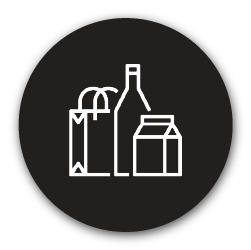
1. Ensure you have the correct assortment/range
Our first tip is to ensure you have the correct variety of products for each of your product categories. In short, have the right assortment.
Why?
Let’s consider the benefits:
- Improves store performance
A data-driven assortment plan that aligns with your store or cluster profile means you can create a planogram that improves performance by aligning your different category roles, strategies and tactics. You can also cater to the demands of your consumers around products, price, promotion and place.
- Enhances the shopping experience
By ensuring you have the correct range on your planogram, you can ensure that there are no empty spaces on the shelf since you won’t include discontinued items on your planogram. That leads to a neat and more visually appealing shelf. It also means a better shopping experience for your customers since they can find what they need without fuss.
- Creates consistency and improves reputation
Implementing the same assortment range on your planogram across your stores allows you to create consistency. As mentioned in a previous article, this consistency leads to an improved reputation. Any customer will know that no matter which store they visit, they will find the product they want.
Those are a few benefits. But what does having the correct range look like in-store?
Let’s say, for example, you stock a dishwashing category. In it, Brand A is about to be discontinued and replaced with Brand X. By ensuring you have the correct product placement on your planogram of the new brand, you can refine your range. That includes discontinuing Brand A so that you can have more space for Brand X. In so doing, you can maximise your sales since more customers are buying the new brand.
Here’s another example:
Let’s assume that the data for a specific store with a particular LSM profile indicates that your customers prefer cold cereals over hot cereals. To improve store performance, you could widen and deepen your range with more cold cereals and brands that match the LSM profiles of your store.
Please keep in mind that the width and depth of your range must still consider your category roles, strategies and tactics to be effective.
When creating planograms with the correct range, you would then provide more % cubic space to your cold cereals and optimise their visibility to enhance the shopper experience and boost your sales. It’s that simple.

2. Communicate with your suppliers
There should be no argument about this fact - you need suppliers to compete in the market. Likewise, suppliers need you and other retailers to keep their business going. Here’s another fact - without clear communication between you, you’ll both struggle to run a profitable business.
After all, imagine attempting to plan a category strategy that corresponds to customer expectations without having access to any market data. It’s close to impossible. But that’s not the only consequence.
Poor communication can be the deciding factor on whether a planogram is implemented successfully or not.
So what key components must be in place to ensure good, healthy communication with your suppliers when building any planograms?
- Communication must be constant
If you want to provide the right products to your customers, you must have continuous communication with regards to product innovation, suspended or discontinued lines, trade agreements and so on.
- Have relevant communication channels
The communication channels that you agree on must be convenient, timely and relevant to ensure that you can send and receive messages easily. If there are any issues or problems, it is easier to fix them when everyone knows what process to follow when communicating.
- Establish clear expectations from each party
Tying into the above, you must ensure that everyone understands what is expected of them when setting up channels and communicating. There can be no room for misunderstandings or miscommunication.
- Reasonable expectations
Alongside clear expectations should be the fact that you must have reasonable expectations. For example, you should ensure that expectations are achievable within a sensible and practical time frame to avoid disappointment or causing damage to your relationship.
- Mutual respect
This is all about two-way communication. Thus, when communicating, you must ensure that it is done with mutual respect and room for each other to provide feedback. It comes back to the point of continuous communication. In having an open line of communication, you can ensure that everyone wins - you, your supplier and the shopper.
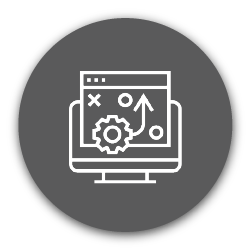 3. Integrate tactical strategies into your planograms
3. Integrate tactical strategies into your planograms
Planograms communicate where the different products sit on the shelf. You can thus use this as an opportunity to integrate tactical strategies into your planograms.
If you’re looking to improve store performance, there are numerous available strategies. A few include:
- Transaction building
By stocking a wide and deep assortment, you can increase the average purchase value of your shoppers.
- Profit generating
By focusing on items with a high gross profit percentage contribution per unit, you can increase the sales of your high margin products.
- Image enhancing
By optimising your space based on the market position of individual products, you can enhance your image as the retailer of choice.
As we mentioned above, if you’re building a planogram, you must always keep in mind your category role so that you don’t choose an inappropriate strategy or tactic. When DotActiv delivers its Planogram Development service, we have in-depth meetings to ensure that the placement of products on a planogram matches the chosen category roles.
Let’s use the Profit generating strategy as an example to explain how it can help improve store performance.
First, you’d identify the fast- and slow-moving products within the category. Let’s call it Category X. From there, you can figure out which products deserve more or less shelf space. For the slow-moving items, you want to reduce facings or even remove lines. Once done, you can allocate that space to your fast-moving products, essentially increasing their facings. Doing so means you can increase the profit of Category X, and by association, increase store performance.
In the future, you can re-evaluate this category and optimise where necessary to ensure it continues to generate profit for your store.
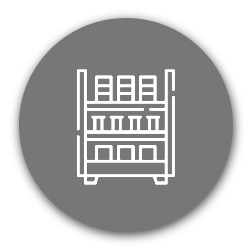
4. Staple down your merchandising principles
Above, we mentioned the need to integrate your tactical strategies. It’s just as critical that you staple down your merchandising principles.
There are many good reasons why.
- It leads to consistency
It doesn’t matter which merchandising principle you choose, if you make use of planograms across your stores for a particular category, you can ensure consistency. It’s similar to the consistency that comes from having the same assortment on your planogram across stores. This also leads to a better shopping experience for your customers.
- It leads to efficiency
There are many different categories that requires planograms. When you employ standard merchandising principles, you can save yourself much time and effort. You can use that extra time on other aspects of your planogram building such as data analysis.
- It leads to a boost in sales
Tailoring specific merchandising principles to your consumer profiles such as planogram flow leads to a boost in sales because you’re taking a customer-centric approach. You’re looking at how customers shop a category and then presenting products in a way that makes it easier for them to find what they want.
A few merchandising principles include:
- Placing new products at eye level to provide them with enough exposure to make an impact;
- Placing your House brand between the higher end, popular brands to establish a perception of value; and
- Including a minimum number of fast-moving products on your shelf to reduce out of stocks.
It’s also critical to consider any principles that your suppliers want to implement if they have paid for space on the shelf. As we mentioned before, they are well educated on their categories and are often best suited to help merchandise products on the shelf.
Here’s an example to explain our point further.
Let’s assume that a specific department in your store with a set of categories must be brand blocked as the average consumer for this department is brand loyal. By stapling down your merchandising principles while creating a planogram, you can ease the shopping experience and drive sales because your customers are finding these categories easy to shop.
You are meeting their expectations and whenever you do, your stores benefit too.
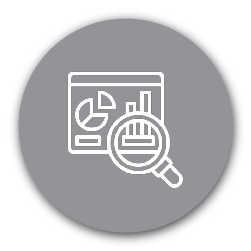
5. Do your research
Analysing consumer behaviours and the thought processes a customer goes through when shopping a category is an excellent tactic to improve customer satisfaction.
Why? Because it comes back to a consumer-centric approach that we mentioned above.
Doing so allows you to know who shops at your store. It also allows you to understand their spending habits. Do they shop your categories that hold Destination roles only, or do they buy across categories that have other roles?
In knowing this, you can build planograms that hold the right type of products. For example, you’d want to include more products (stock a deeper and wider range) in these Destination role categories to meet their needs.
Understanding a customer’s thought processes means you can create planograms that make the shopping experience easier and more pleasant. That leads to customer satisfaction and increased loyalty to your store and retail brand.
But it’s also more than the above. Doing your research and understanding your customer improves the planogram building process allowing you to complete the following:
- Determine a logical planogram flow
- Place your top-performing products at eye level
- Place popular brands at the beginning of your category
All of the above allows you to create a better shopping experience for your customers. The fact that it also ensures you increase your bottom line helps to reinforce why it’s worthwhile.
Let’s consider a situation where you stock a Tools category.
When building planograms for this category, your data may indicate that customers lean towards purchasing sets and toolboxes more frequently than single lines or replacements. In that case, you could merchandise these sets lower down and within reach, thereby making them more visible.
Doing so increases the turnover of these high-in-demand products. It also leads to increased revenue since you account for the increased demand and have met it with an increase in supply so that there is never an unplanned shortage.
6. Create meaningful reports
When built using data, planograms are no longer pretty pictures. Instead, they become key merchandising tools that you can use to analyse your shelf space before, during and after the process.
Before
Before building your planograms, you can analyse your realograms and spot if you need to fix anything. For example, you can see your hot and cold spots and update your planogram accordingly.
For context, a realogram is a planogram indicating how the store shelf space is used before any optimisation.
You can also pick up on any major differentiations in DOS that could lead to future problems in-store with replenishments.
During
Using DotActiv’s Custom Report function, you can monitor and analyse the impact of your changes during the planogram design phase. If you find that you’ve given too much space to a product that isn’t performing as expected, you can reduce its facings. Meanwhile, you can increase the facings for another product that deserves it according to their sales figures.
By monitoring your planogram and data, you can be prepared should anything arise.
After
Include a deck of relevant reports that allow you to justify the space allocations for each of your products on the planogram. There is a reason why you gave more space to one product over another, and now is the time to justify this thinking. You can further reinforce why it’s necessary to implement the planograms you built.
It’s worth noting that if the outcome isn’t to your satisfaction, you can always tweak the planogram. No planogram is set in stone.
So why is all the above worth it? Imagine this scenario:
You meet with your merchandising team and category managers to get their input. With that input and after looking at any collected data, you can build a planogram that meets everyone’s expectations (customers included), which makes the sign-off process easier.
It also leads to fewer problems when implementing the planograms in-store as you’ve already addressed most issues.
For example, you might believe that a specific brand should receive an entire drop on a planogram due to the volume of SKUs in the range. However, when looking at the data on the custom report, the sales and units might not align with the % cubic space given to the brand, which means you’ve overfaced it - it has too much shelf space.
Now consider having this continual input and data each time you build your planogram. It leads to better-designed planograms each time because you’re using previous input and layering it with new and relevant input.
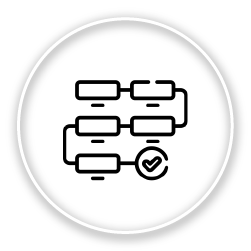
7. Commit to the process
Our final, but certainly not least significant tip for building planograms that lead to increased store performance, is the need to commit to the process all the way to the end.
You must ensure that the planograms you build are implemented correctly in-store. After all, creating a planogram that you know will generate more sales and improve the shopping experience means very little if you can’t implement it in-store.
In most cases, the impact of incorrect planogram implementation is substantial. If the entire process is followed seamlessly, and a fully complete planogram is implemented successfully, you can expect an increase in the following:
- More revenue;
- Increased foot traffic;
- Larger basket sizes;
- Higher customer loyalty; and
- Improved customer satisfaction.
Let’s say, for example, you want to do a full store implementation.
In such an instance, you could take the entire store and merchandise the full range on offer, drop by drop, line by line. That allows you to group your products accurately according to the solutions they offer. From there, you could allocate more space to your fast-moving categories.
Don’t forget your roles, strategies, tactics and merchandising principles. With them in place, and having analysed all your data, you’re in a good position to implement planograms that will increase your sales.
Conclusion
The results that follow from creating data-driven shelf plans and implementing them correctly are alone enough to drive a compelling argument for using planograms in your store. Of course, the results are only possible if you follow the tips we’ve laid out above.
That includes having the correct assortment, ensuring continuous communication with your suppliers, integrating tactical strategies, using merchandising principles, researching your customers, analysing your data, and correctly implementing your planograms.
Are you looking for specialist software to get you going? Why not use one of DotActiv’s three paid software editions? Alternatively, book a complimentary consultation with a DotActiv expert to understand more about how we can deliver performance-enhancing planograms for your business with our Planogram Development service.
About the contributors
Elizabeth Maitland joined DotActiv in 2021 as a space planner where she delivered our Planogram Development services to a variety of clients. She has since joined our JB Active account as a category planner. She has a Bachelor of Arts in Fashion Media from STADIO's School of Fashion, formerly known as LISOF.
Jade Charters joined DotActiv in 2019 as a space planner, creating data-driven planograms for Makro, a wholesaler chain and subsidiary of Massmart. She currently works on the Makro General Merchandise account. She has a Bachelor of Consumer Science in Clothing Retail Management from the University of Pretoria.
Jessica Britt joined DotActiv in 2021 as a space planner, creating data-driven planograms for Makro, a wholesaler chain and subsidiary of Massmart. She currently works on the Makro Food and Liquor accounts. She has a Bachelor of Commerce in Marketing Management from Varsity College.
Liam Smitsdorff joined DotActiv in 2021 as a space planner for our Motus account. There, he works on delivering data-driven planograms and expert advice. He has a Bachelor of Commerce in Marketing and Management Sciences from the IMM Graduate School of Marketing.
*This article was updated on 25 May 2022



